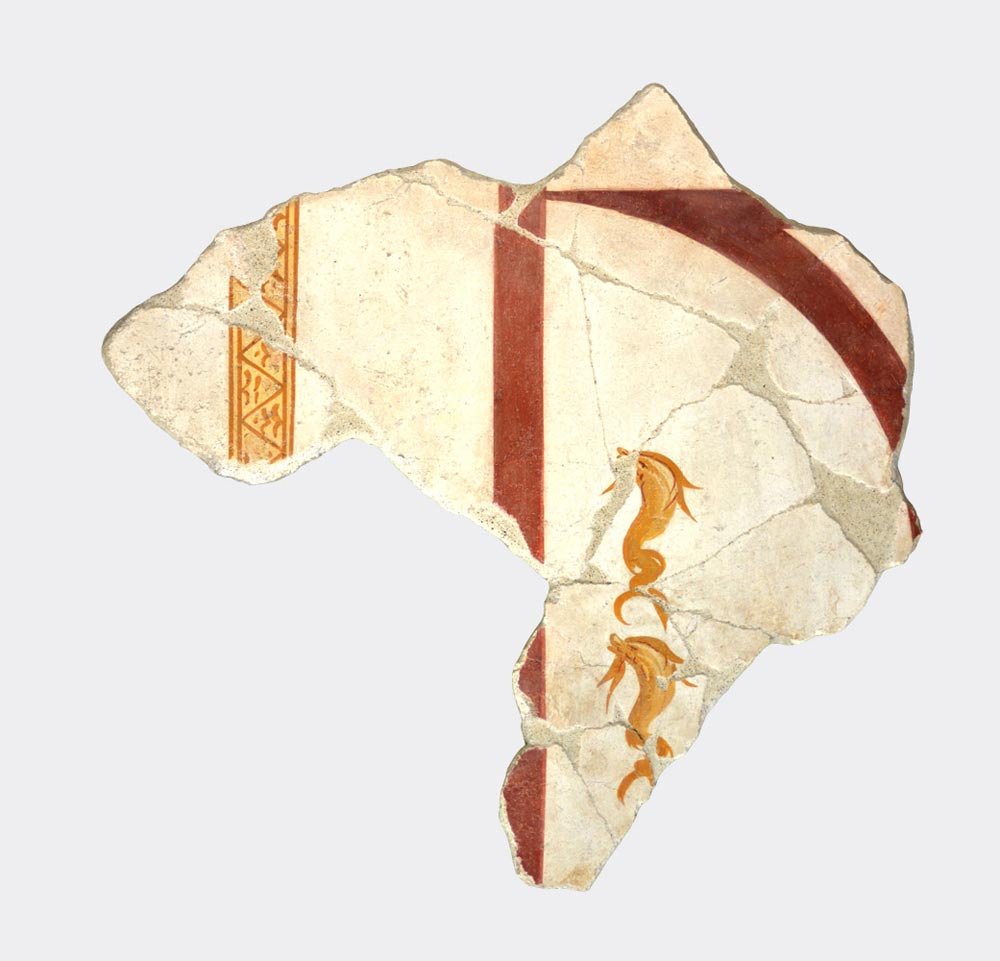Fragment of Ceiling Painting with Dolphins

Reconstructed Floor from Dayroom (Diaeta) 78

Several floors in the east wing were paved with imported marble cut to create geometric patterns in a technique called opus sectile. These floors included the most desirable types of colorful marble available at the time, which were procured and worked at significant expense.
The yellow marble with red veins is from the North African kingdom of Numidia (Tunisia). The black stone with red and white inclusions is from Asia Minor (modern Turkey). It was called Lucullan after the general, Lucullus, who was the first to import it to Rome. The white stone with purple veins is from Phrygia (west central Turkey), and the pink mottled stone is from the island of Chios in the Aegean Sea.
Some of these marble types appear in Villa A’s Second Style wall paintings, produced in about 50 BC, before the marble itself was available for private use. For example, in room 11, reconstructed in this exhibition, the painter depicted blocks of yellow Numidian marble as well as a red and grey stone that resembles Lucullan marble. With imported marble, real or imitated, the owners of Villa A celebrated the power and expanse of the Roman Empire, which encompassed all the lands from which these materials came.
Diaeta 78, reconstruction of west niche pavement. Reconstruction: Simon J. Barker and Timothy J. Liddell.
Reconstructed Floor from Room 69

The samples of ancient marble shown here are from the collection of the Kelsey Museum.
East Wing of Villa A

Fragments of ceiling painting and statue of Victory (Nike)
Over the course of more than a century, many luxury villas on the Bay of Naples, including Villa A, expanded outward from a traditional Roman atrium-centered core to include colonnaded courtyards and long porticoed walkways that stretched along the coast or hillside, offering breathtaking views of the mountains and the sea. Villa A’s east wing conforms in architectural character to these developments.
One of the features that distinguishes Villa A’s east wing is the lavish use of imported marble in columns, on walls, and inlaid into floors. Two special rooms in the east wing, a large reception hall (oecus 69) and a small day room (diaeta 78), had inlaid marble floors. Reconstructions of small areas of these two floors are in the exhibition. The gray marble columns and white marble capitals of portico 60—the long colonnaded walkway that ran parallel to the swimming pool—mark Villa A as especially luxurious.
The wall paintings in the east wing, in the Fourth Pompeian Style, are distinguished by their elegant simplicity and linear designs. The ceiling fragments in the exhibition contain many delicate details that reward close study. The lower walls in Villa A’s east wing are painted in simple panels of red, white, or black, with exquisitely painted framing devices and small panels of landscapes and still life compositions. One such landscape painting is displayed at the entrance to the Villa A gallery.

